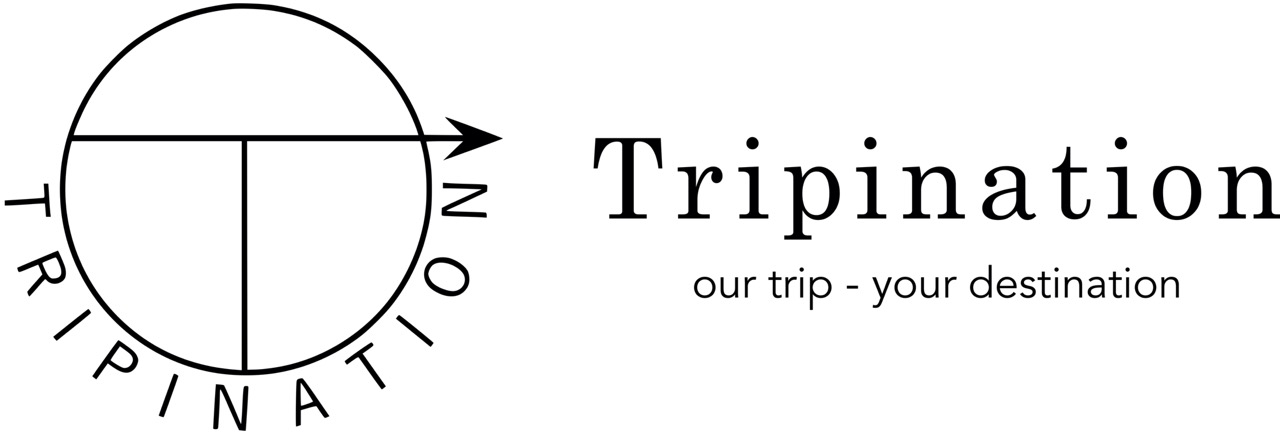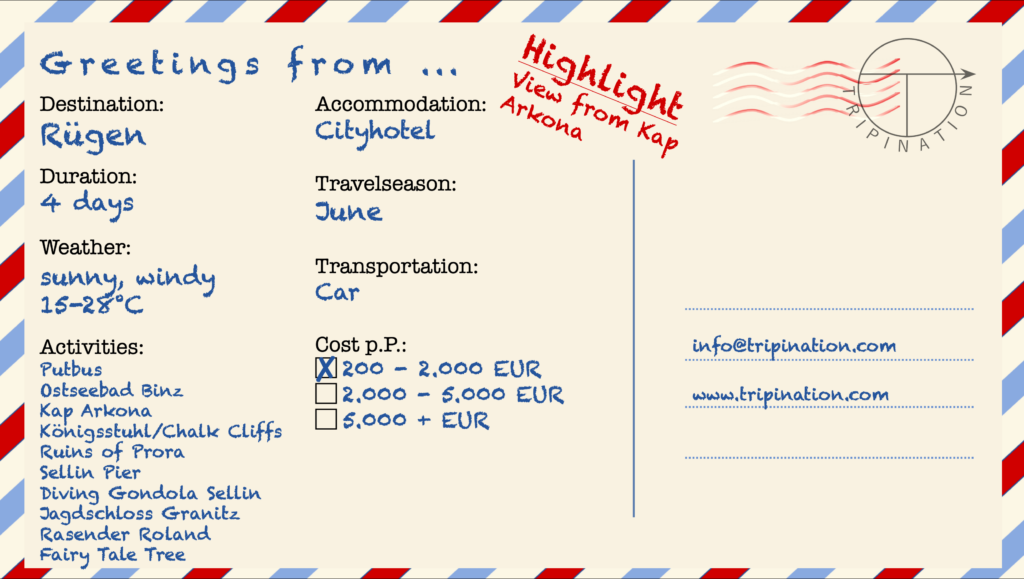Rügen, way up in the northeast of Germany, has been on our travel list for a while. In fact, we already wanted to visit Rügen on our Germany tour. Unfortunately, at that time, a severe thunderstorm threw a wrench in our careful planning. But as we know, postponed is not canceled – and now it is so far.
In the following article you can read which sights await you on Rügen. How to get around, where to find nice photo spots and how to get to them. Simply put: How you can spend a great long weekend full of moments on the island. By the way, here* you can find more inspiration.
Wide green fields, a light breeze and sunshine. This is how Germany’s largest island, Rügen, welcomes us in early summer. Our first stop on the island was the town of Putbus. A pretty little town with an impressive traffic circle. The Circus, in the middle of which the obelisk rises 21 meters into the air. This obelisk was erected in 1845 in honor of the then Duke of Putbus, Wilhelm Malte I.. The traffic circle is surrounded by white houses, built in the style of classicism, from the 19th century; partly renovated, partly vacant and waiting for renovation. In any case, the elegance and prosperity of bygone days still lives here.
Green fields, white villas, long beaches
From Putbus, we continued on to Binz. The chic seaside resort of Binz, with its kilometer-long beach promenade, already exuded pure vacation feeling upon our arrival. Here we moved into our accommodation for the next nights – the Hotel Vier Jahreszeiten*. Very centrally located, a tastefully furnished and functionally equipped room as well as a valet parking service awaited us. The parking space in the underground garage for 12 euros per day is absolutely necessary, as no public parking spaces can be found in the immediate vicinity. In addition to the Nordic charm of the house, the breakfast buffet could score with us. No wishes remained open.
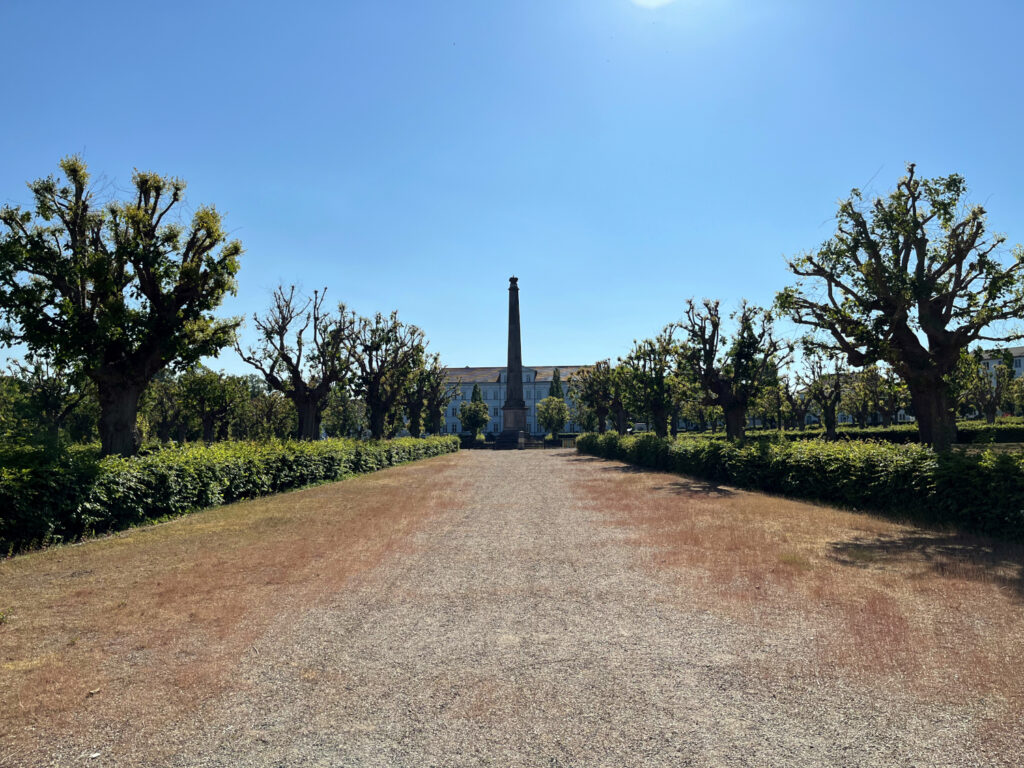
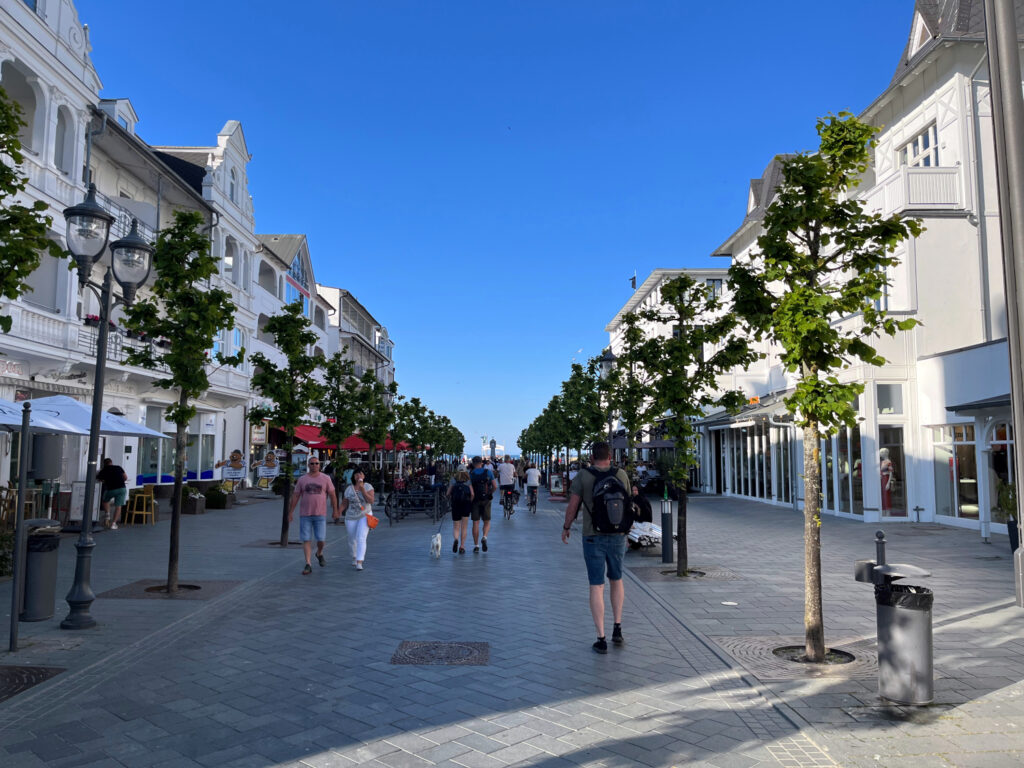
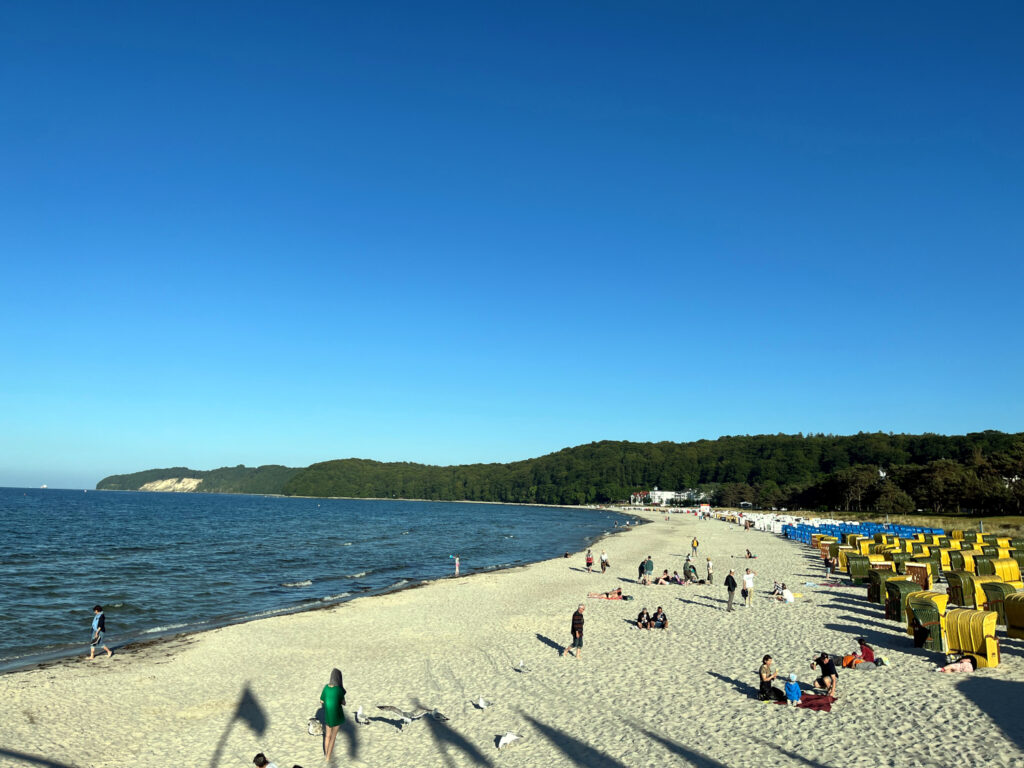
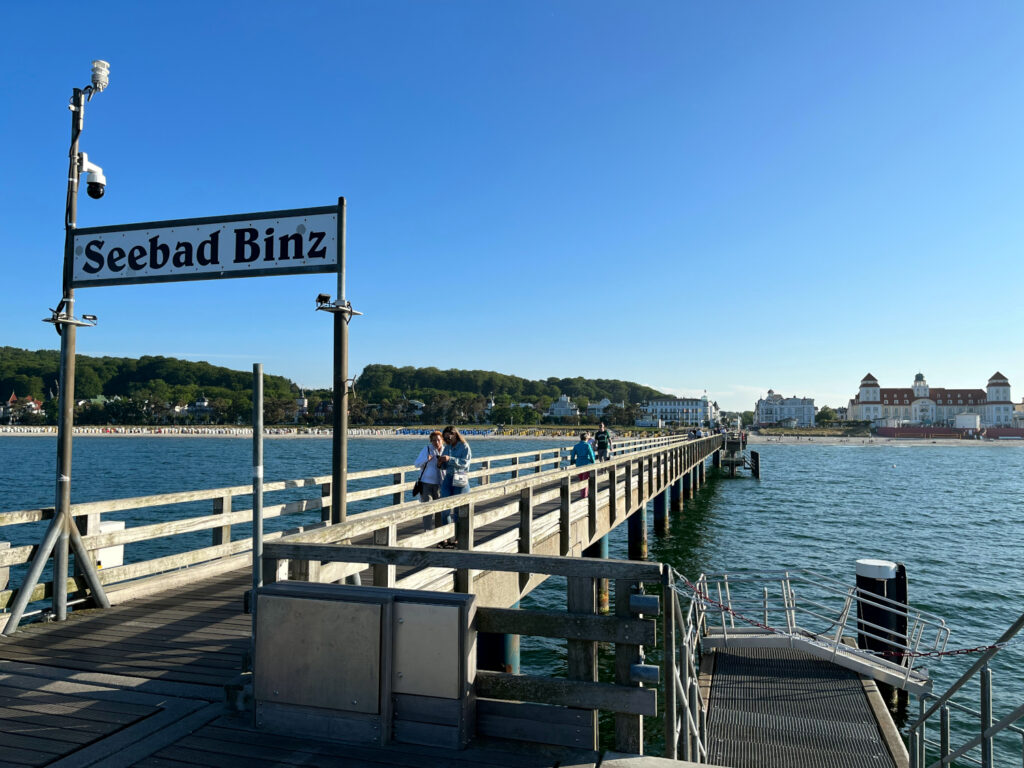
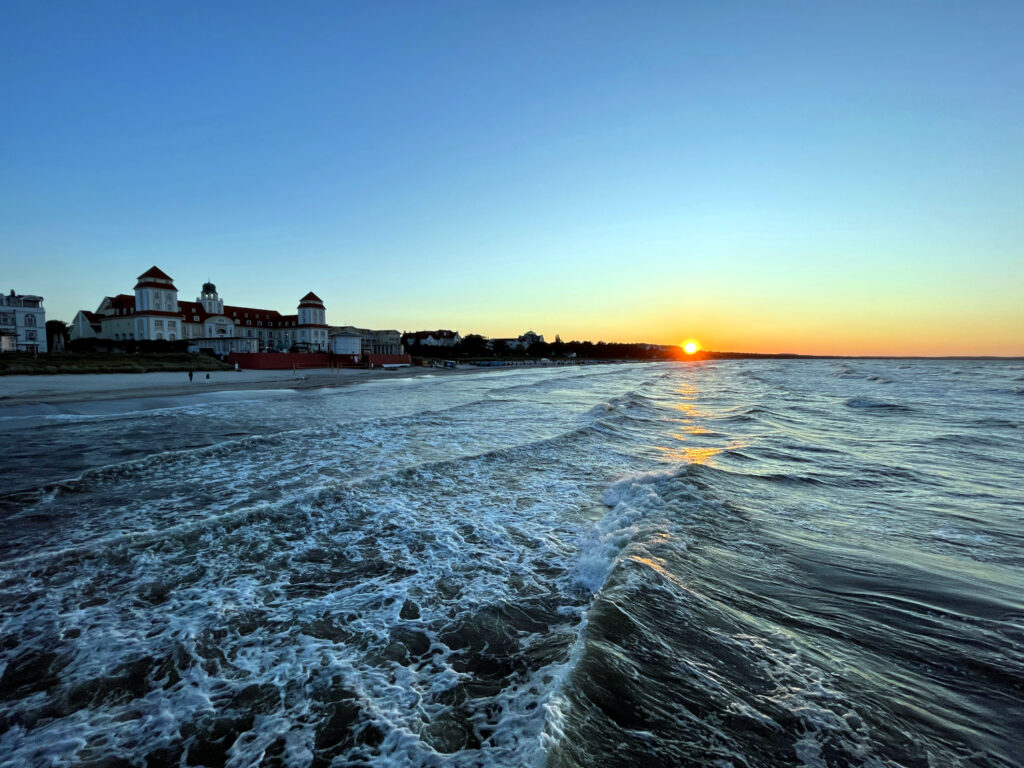
The seaside resort of Binz is located in the Binz Bay, a five kilometer long sandy beach. The first thing that catches your eye is the long jetty out into the sea. To the right, the chalk cliffs are already visible in the distance. If you walk along the pier and turn towards the beach, the grandiose view of the coastal front of Binz awaits you. With the handsome Binzer Kurhaus, which immediately catches the eye. At dinner (Peter Pane) we enjoyed the view of the sea before watching the sunset from the pier. As soon as the last rays of sun have disappeared it becomes fresh at the Baltic Sea. Despite of the wind, we visited Willie’s beach bar (germ. Willie’s Strandbar) well wrapped up. Here you can enjoy cocktails with your toes in the sand until late in the evening.
Where chalk cliffs blend into the horizon
The next day we started in the far north, at Cape Arkona. From Binz you drive a good 40 minutes and park in Putgarten on a large parking lot (flat rate 7 euros per day). Souvenir shops, snack bars and free toilets are also available here. Visitors cannot park at the cape itself. Now there are two ways to reach the cape Arkona: The first would be on foot or alternatively by bicycle. The second possibility is the shuttle bus (cost: 5,- € p.p.). On foot it takes about 30-40 minutes. The shuttle stops at two more stops: In the village of Putgarten, at a small square with restaurants and again just before the small village of Vitt, with only 18 inhabitants. The trip with the shuttle takes about 15 minutes. For the return trip there is a shuttle every 15 minutes at Cape Arkona. Although the weather was perfect for a walk, we decided to take the shuttle.
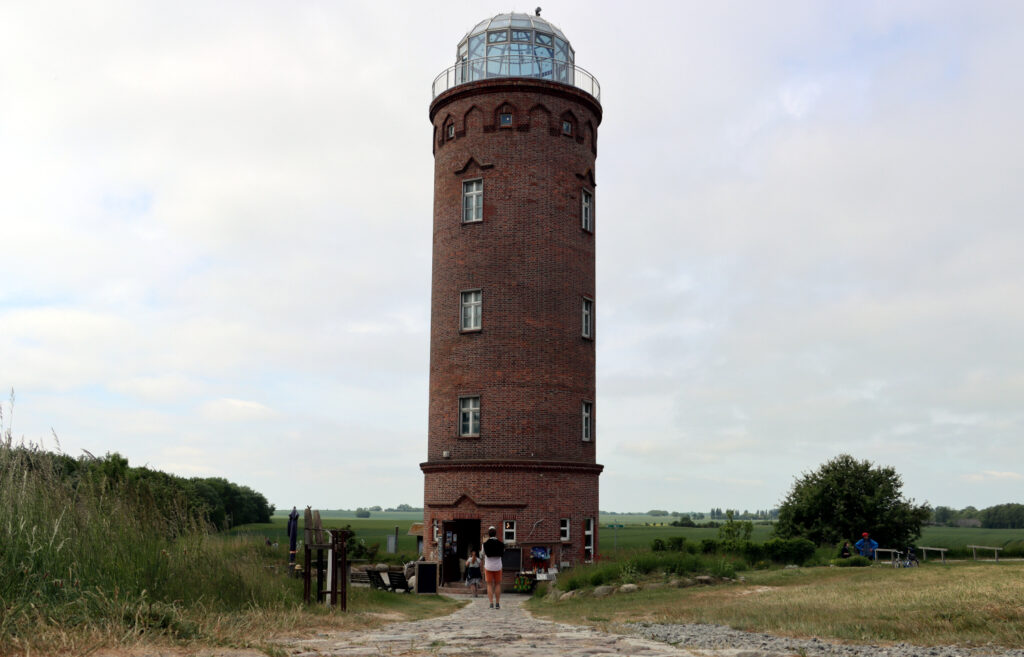
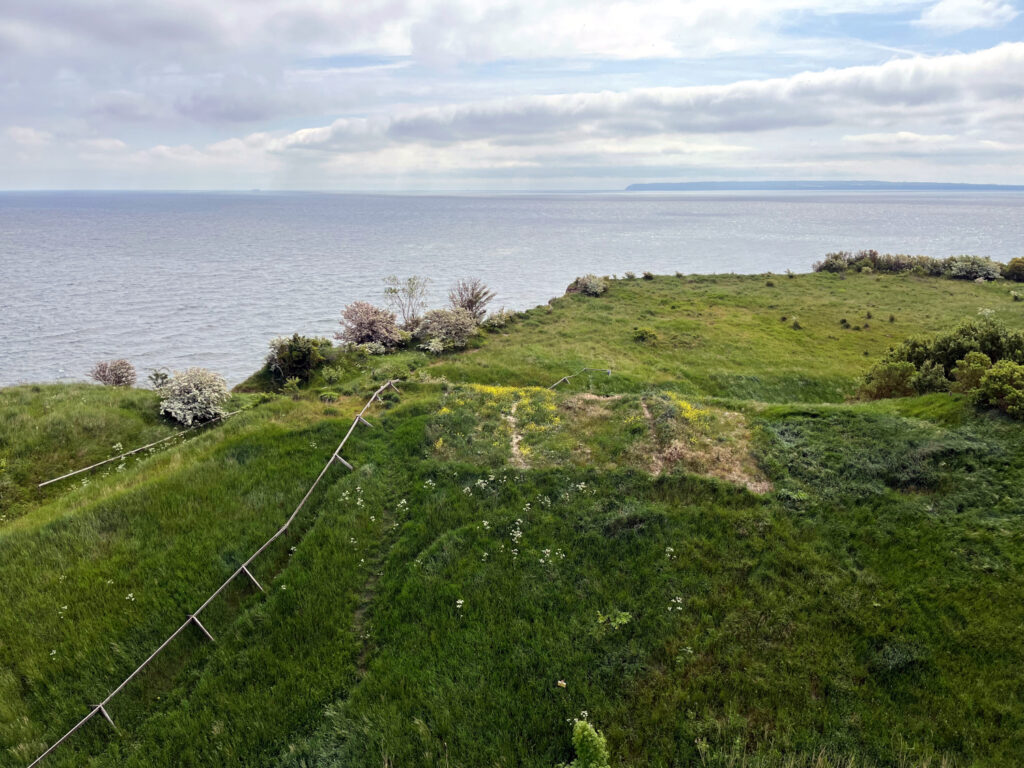
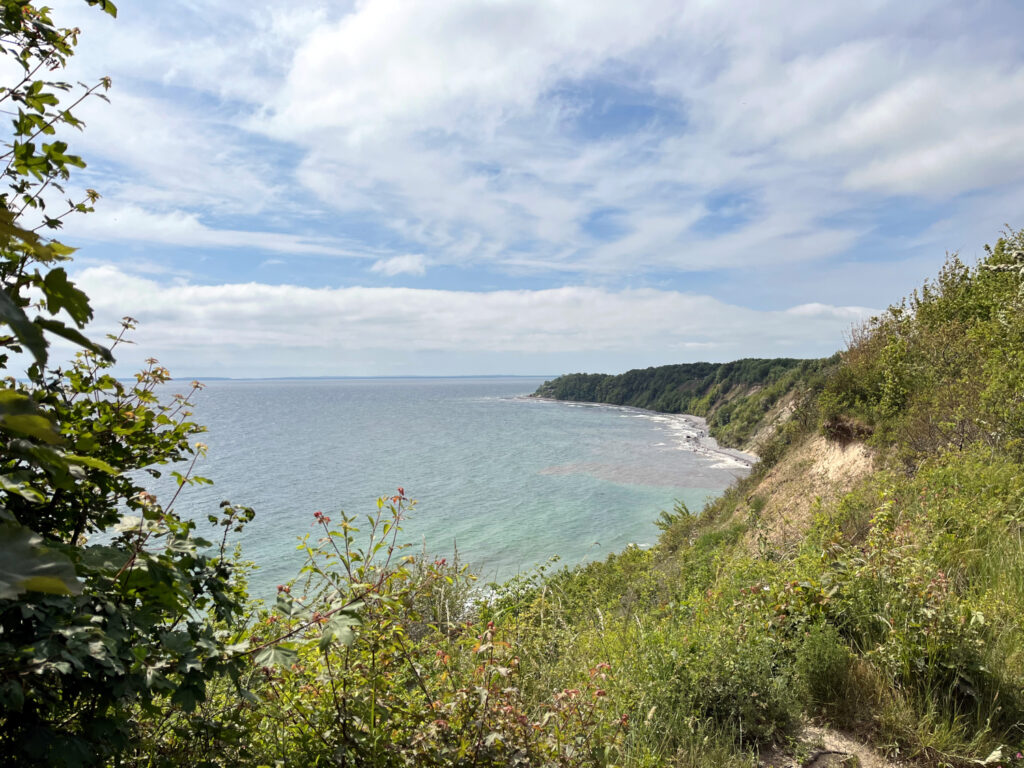
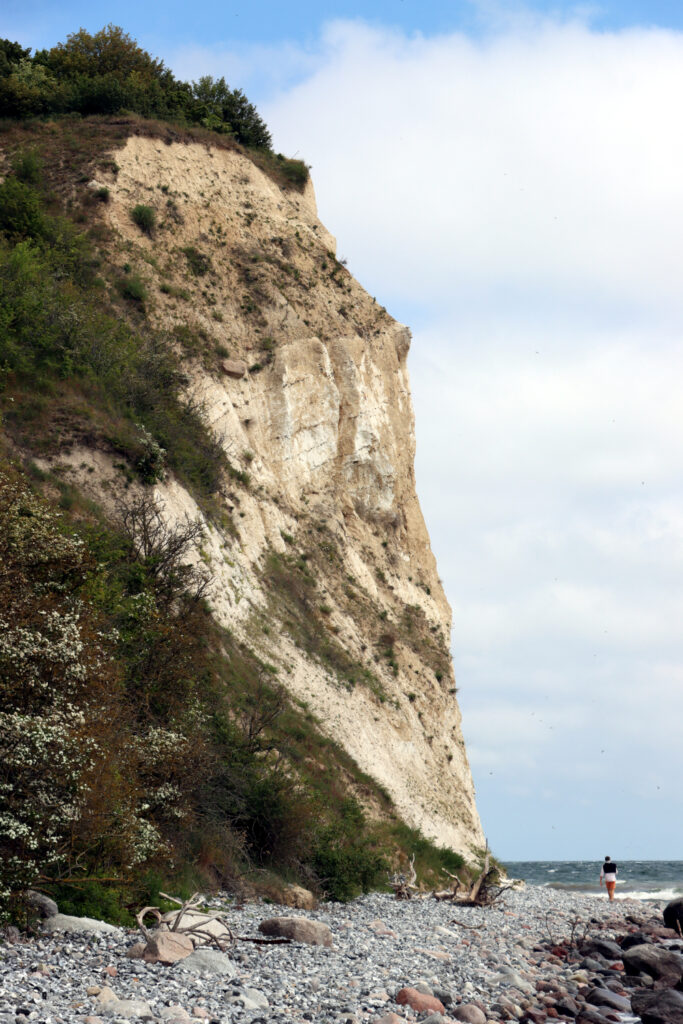
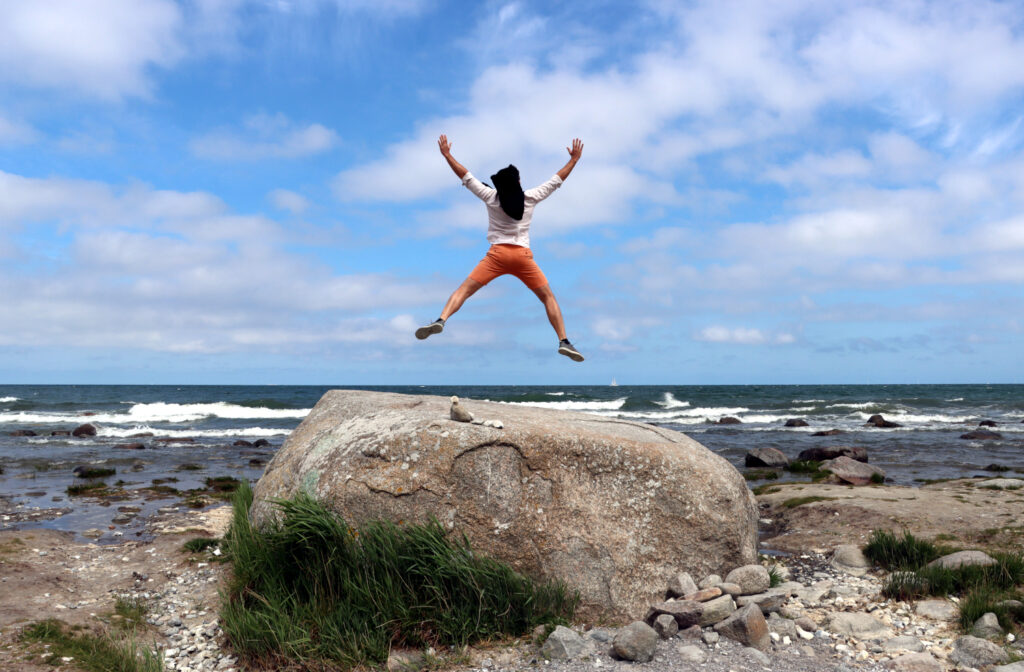
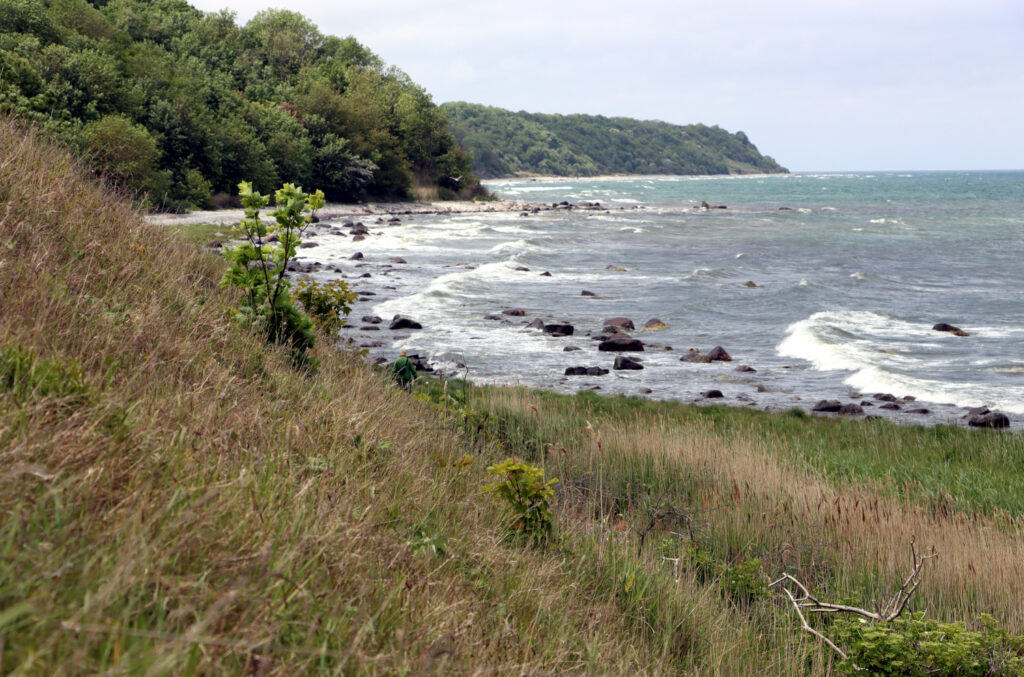
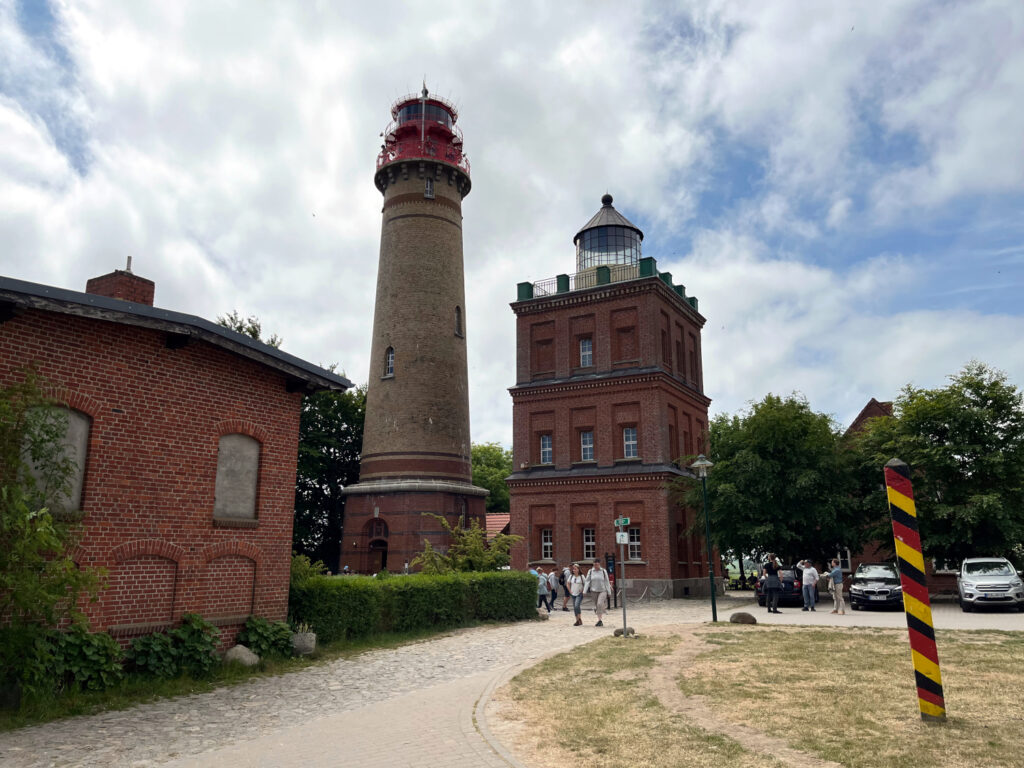
Arriving at Cape Arkona, a picturesque landscape awaits you, characterized by the remains of the Jaromarsburg from the 9th century and the Slavic castle rampart along the cliff. Due to the continuous land erosion of the high shore cliff, only the remains of the castle rampart can be seen for the most part. Therefore, the fortifications cannot be visited. However, the attention at the cape immediately falls on the three towers. On the left hand two lighthouses and on the right hand the bearing tower. All three towers have a viewing platform.
The captivating tranquility of nature
We started with the bearing tower, built in 1927. The observation deck is reached after 111 steps and it can be climbed for 3 EUR per person. Once at the top, you can enjoy a magnificent view over the landscape of the Wittow Peninsula.
After the bearing tower, we first headed for a signposted viewpoint, which we reached after about 400 meters. Here there is also a beach access via quite steep steps. However, the descent and ascent are worth it. From below, you have a great view of one part of the imposing cliffs.
View as far as the eye can see
Back to Cape Arkona, we pass the bearing tower and head towards the lighthouses. A popular wedding location. Despite the magnificent view, we spared ourselves the museum and the stairs here and walked further towards the cape. After a short walk through a small forest, Cape Arkona reveals itself to us. Here, too, stairs lead down the steep coast to what is really the northernmost point of the island – the Siebenschneiderstein. Here you can spend time, wander around and enjoy the wind. Or just snap your photo and head to the next highlight of the island – the Königsstuhl and the chalk cliffs.
We parked again on a large parking lot; this time in Hagen (parking fee for the first hour is 1 euro, each additional hour 2 euros, but a maximum of 7 euros you pay here).
Once again, we are faced with the decision: walk/bike or shuttle. We opted for the shuttle (bus line 19) for 3.80 euros. Consciously, we decided against the heavily advertised combination ticket for 36 euros for 2 people. In this ticket, in addition to the bus ride, the entrance to the Skywalk on the Königsstuhl would have been included. However, we saved this ” retiree ramp ” and hiked 500 meters further to the Victoria’s View (germ. Victoria Sicht). From here you have a fantastic view of the most famous of the chalk cliffs along the coast: the Königsstuhl. And best of all, no further entrance fee. The path is short, but steep and rather unsuitable for people who are not good on foot. The sight of the majestic white rocks merging into the dark blue sea is fascinating.
Classical magic, picturesque gardens, archaic architecture
Afterwards we went to the ruins of Prora (“KdF – Kraft durch Freude“ engl. power through joy). Never completely finished, it was supposed to be the longest connected building in the world, along the fine sandy Binzer Bay. Divided into a north and south wing, the site stretches for a little more than 4.7 km. The north wing was not developed except for some foundations and individual buildings. A photo tip: The northernmost piece was completed as an elevated building and can be seen as ruins from the outside. Parking is best at the “Beach and Ruins Parking Lot”, within walking distance. Along the northern part of Prora there are several beach accesses and museums that can be visited.
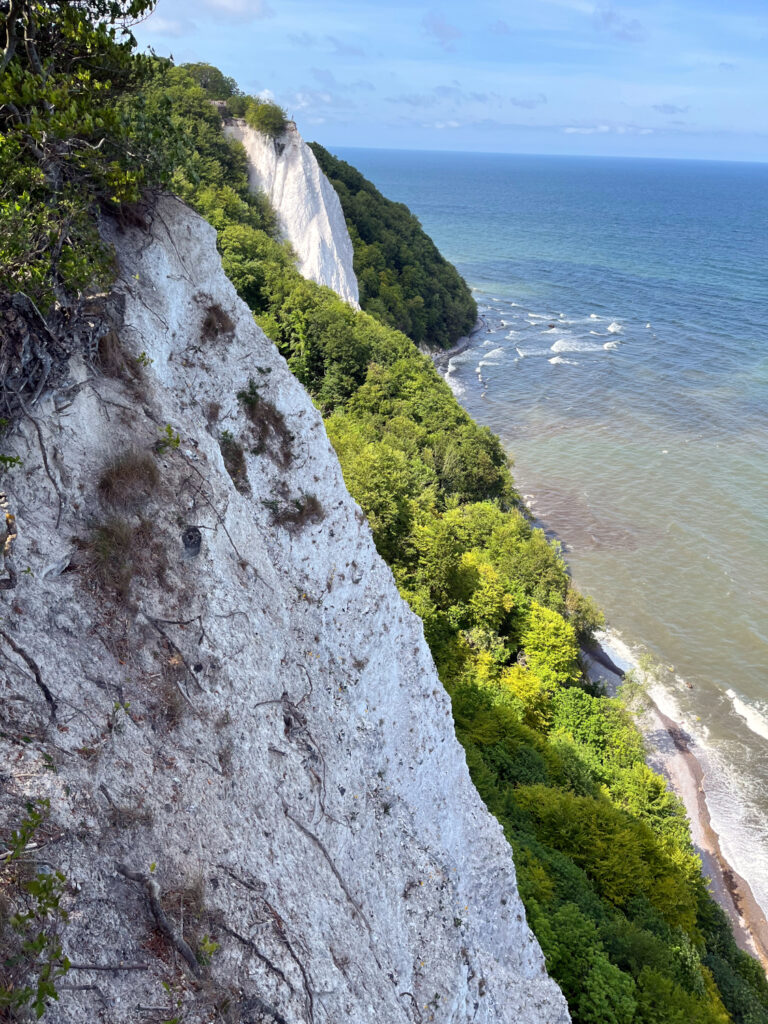
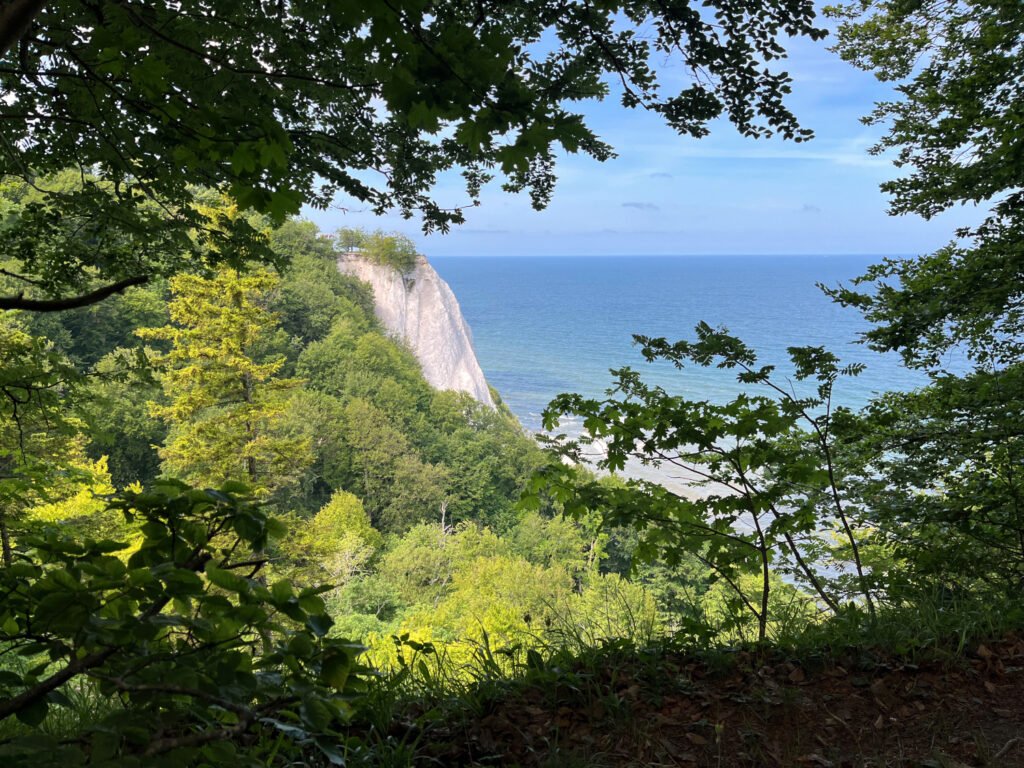
Our next destination was the Documentation Center in Prora, which is located in the planned heart of the complex. Here, the history of Prora and the time is reworked in the original rooms on several levels. An absolute must-visit on Rügen. The gigantic dimensions of this complex are difficult to put into words and very impressive. The southern part of the complex was completed before the Second World War brought the plans for this construction project to an abrupt halt. Workers as well as building materials were needed elsewhere and the buildings were converted into the largest military hospital in Germany.
Today, this southern part of Prora has been completely renovated and converted into apartments and vacation accommodation. Small cafes and shops line the newly created promenade.
“MACHTUrlaub”
The parking lot of the documentation center is located directly in front of the building part and is, like actually all parking lots on Rügen, subject to a fee. You should plan at least 1.5 hours for a visit. Almost exhausted by the gigantic dimensions, the historical excursion and the rough maritime climate, this first full day on Rügen came to an end.
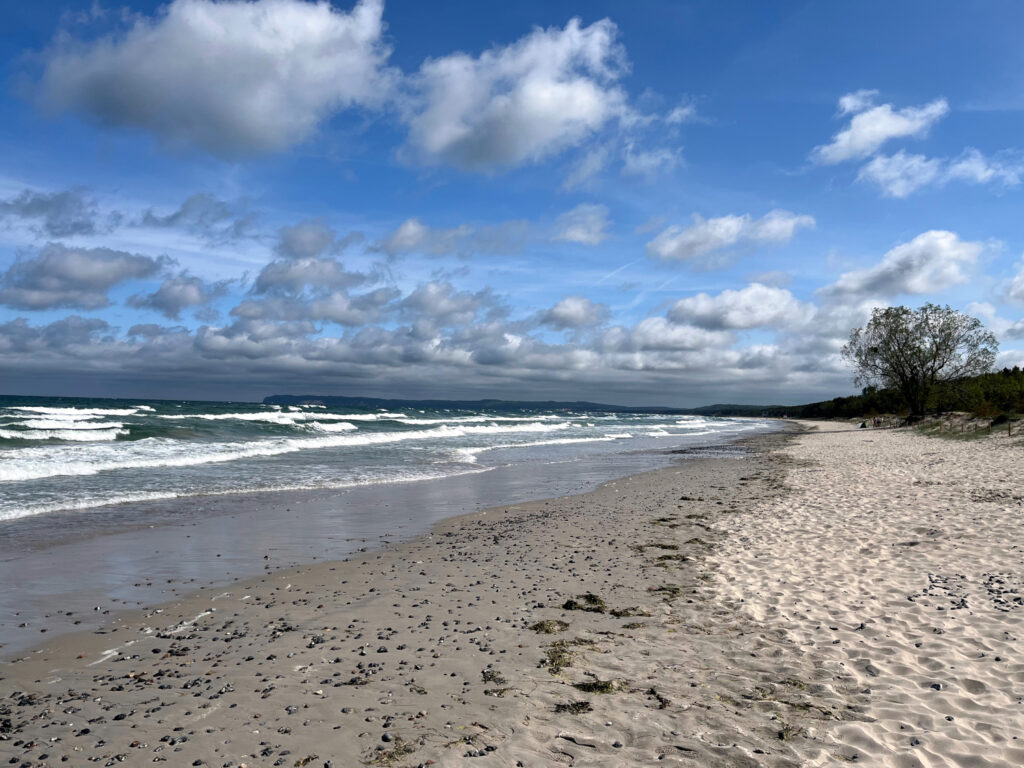
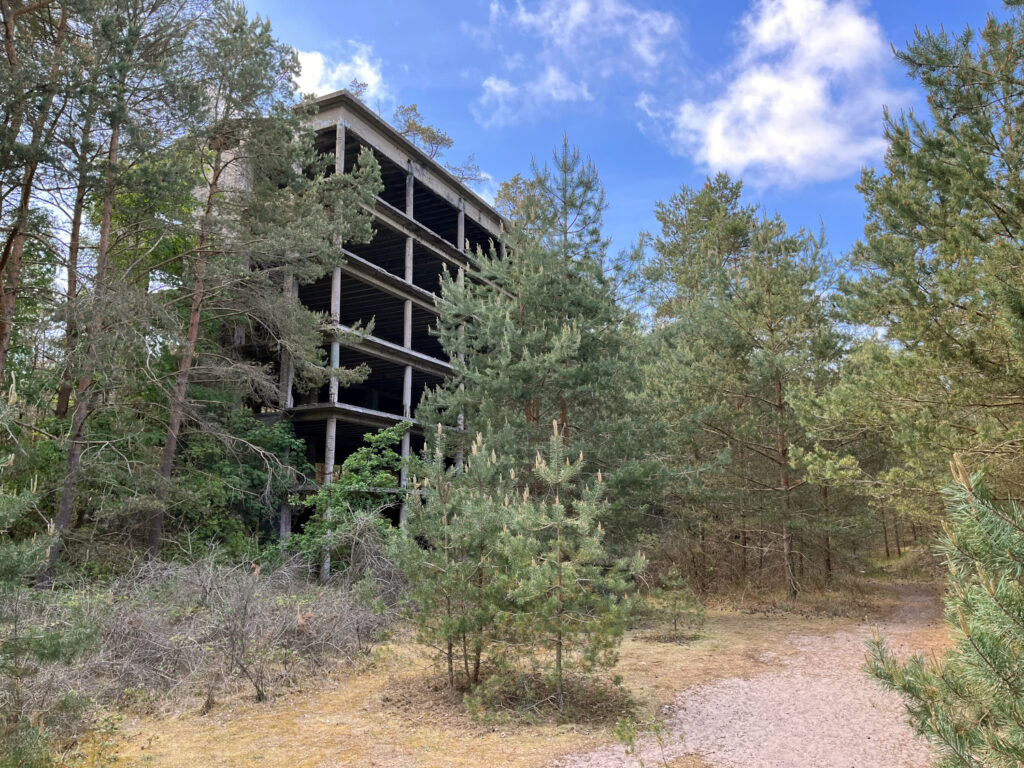
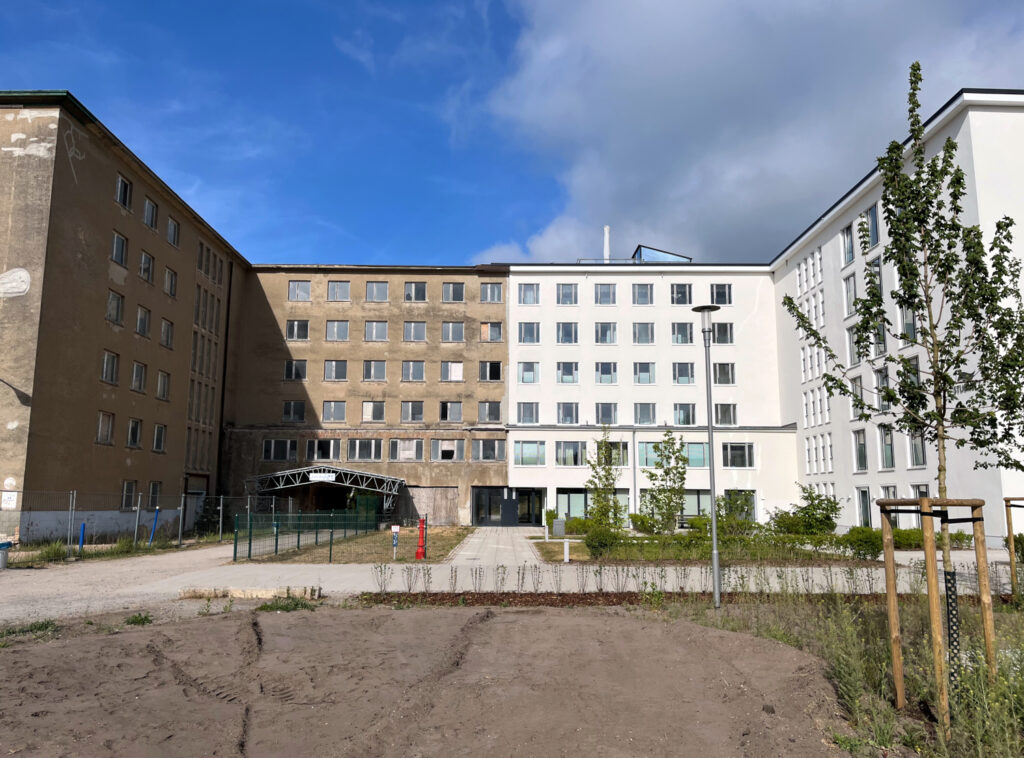
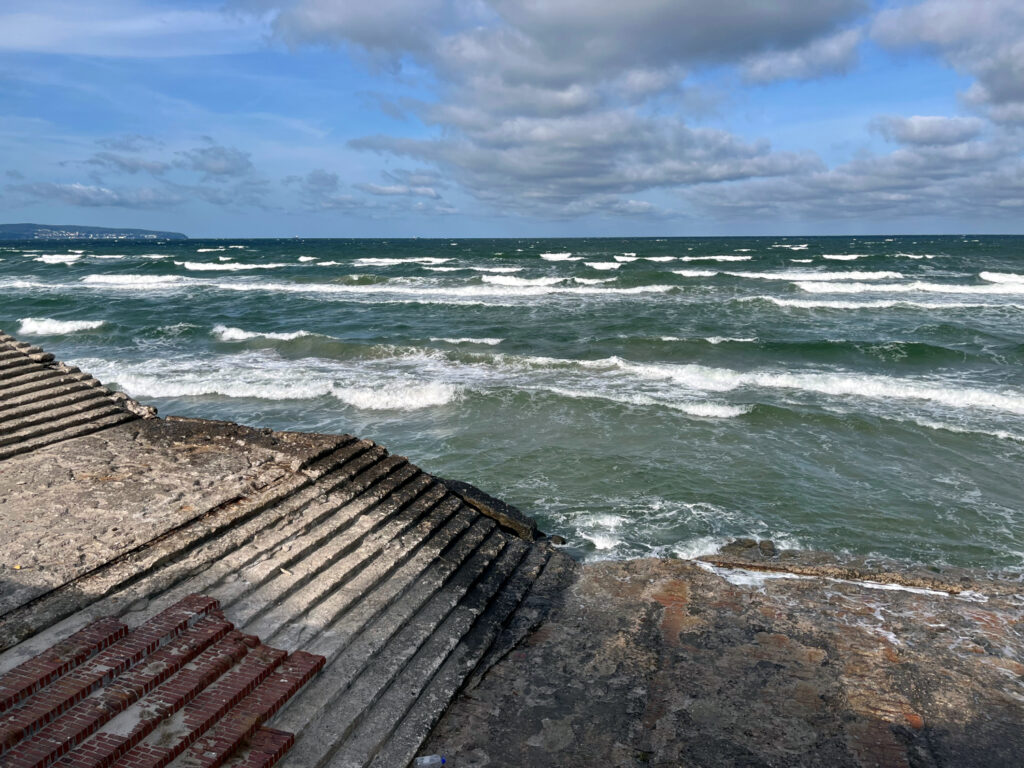
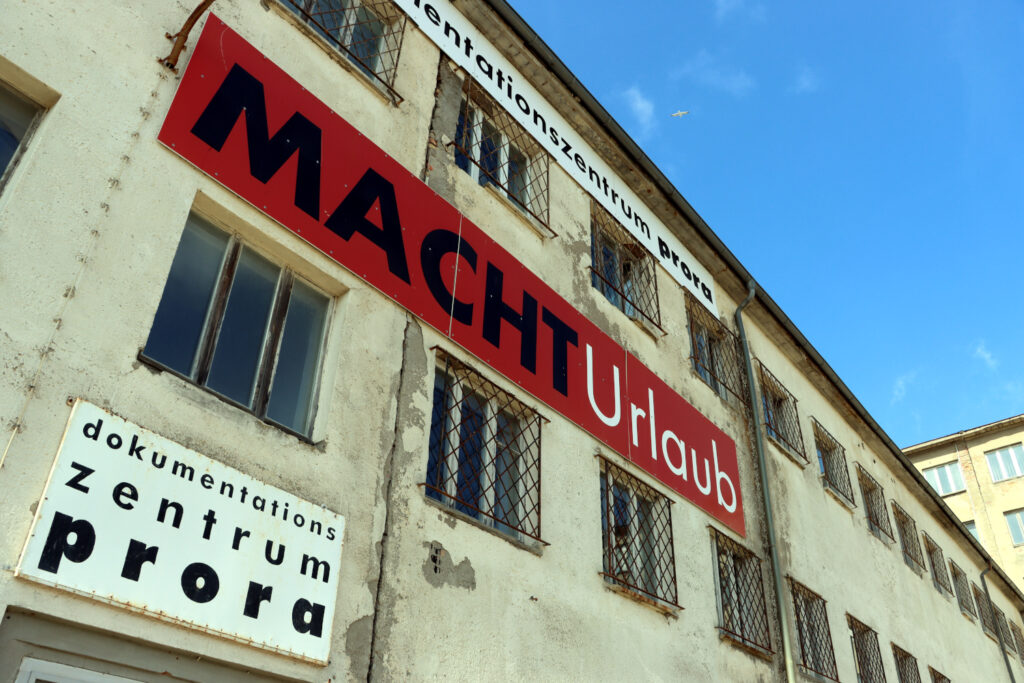
With the Bootshaus Binz we found the perfect restaurant to end the day. In a quaint fishing village atmosphere, we reviewed the day with a sea buckthorn spritz and delicious fish before heading back to the hotel through the stormy evening.
Rügen: From the sea to the forest
The third day on Rügen greeted us again with bright sunshine, and a stiff breeze. Our first destination was the picturesque Sellin pier. Around 10 o’clock in the morning we parked near the promenade. It is highly recommended to arrive here early, i.e. before 11 am, because it gets crowded. After a short walk through the picturesque streets of Sellin, you arrive at the pier. The view from the top is fantastic and probably THE photo motif on Rügen. And deservedly so. Like a white fairy-tale castle on the sea, it lies surrounded by roaring blue water in front of the coast.
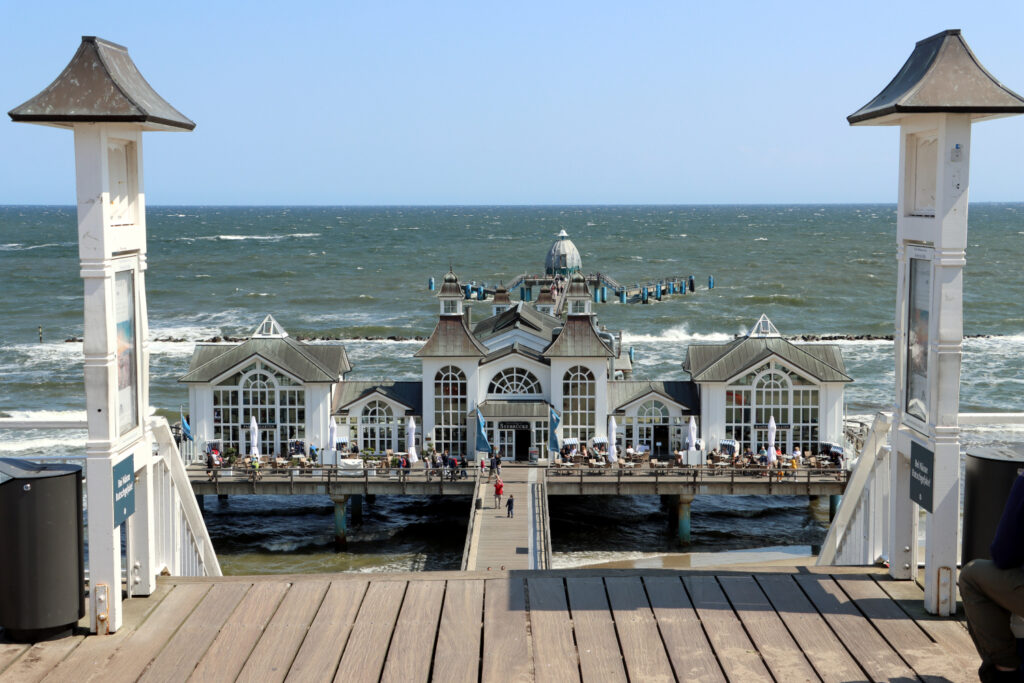
Behind the pier lies the Sellin diving gondola. Every 45 minutes the gondola dives down into the Baltic Sea and you can marvel at the underwater world. Due to bad weather conditions, namely too strong waves, the gondola unfortunately could not descend on this day. There are a total of four diving gondolas along the Baltic Sea coast, including one in Zingst.
Afterwards, we briefly strolled through the beautiful streets before heading to our next destination – the Jadschloss Granitz. Just a few kilometers outside of Binz, this neat hunting lodge is hidden in the forest. It once served as a summer residence for the princely family, but became a temporary home for them when their castle in Putbus fell victim to the flames. The parking lot for the hunting lodge is well signposted. We paid 6 euros parking fee for about 2.5 hours stay. From here you can reach the hunting lodge in about 40 minutes after an easy walk. If you are not good on foot you can also use the offered shuttle. However, the hike is highly recommended. On the way, two other highlights of Rügen can be admired.
Rügen: Choo, Choo – and Ahoy
The first one is the Rasender Roland. A narrow-gauge railroad with a steam locomotive that connects the towns of Putbus and Göhren and is now mainly used as a tourist train. After about 15 minutes of hiking, the rails cross the hiking route and shortly after you also reach the train stop Jagdschloss Granitz. Here is a great photo spot to take pictures of the Rasender Roland. After another 5 minutes of hiking, you have to keep your eyes open a bit, because as we noticed, most tourists ran unsuspectingly past the next sight. Only about 20 meters off the path stands the fairy tale forest tree. Among the dead-straight trees surrounding it, this twisted and branched tree looks as if it were the template for numerous legends and stories. Really crazy what nature does sometimes. After another 15 minutes, the hunting lodge is already flashing through the trees.
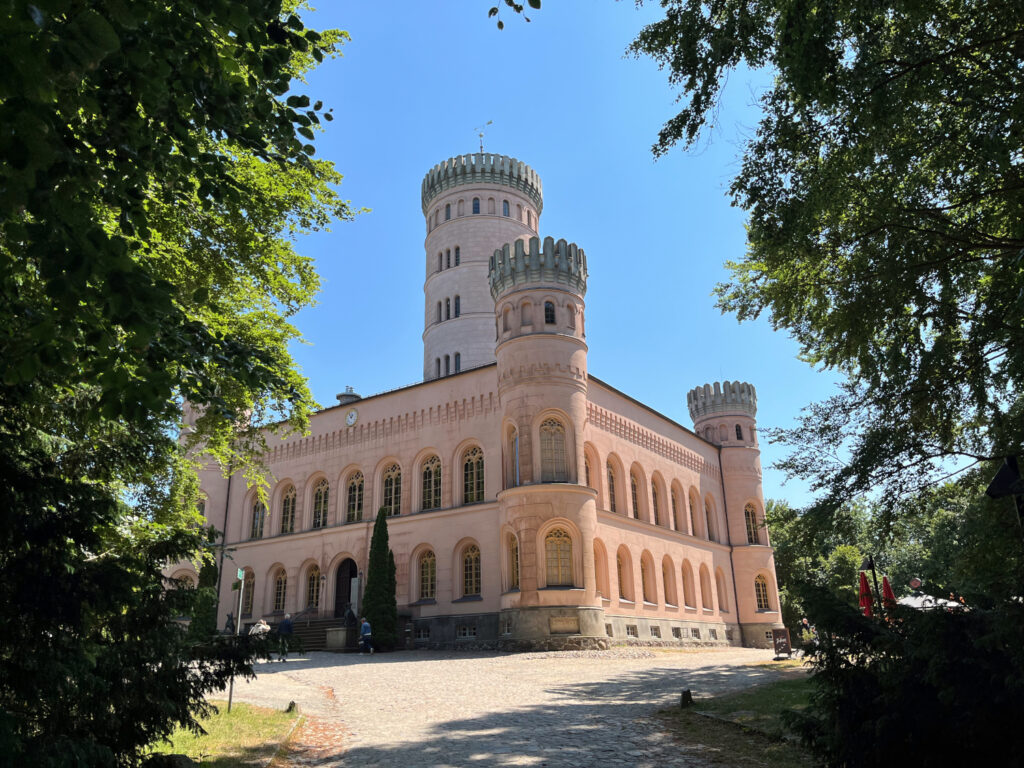
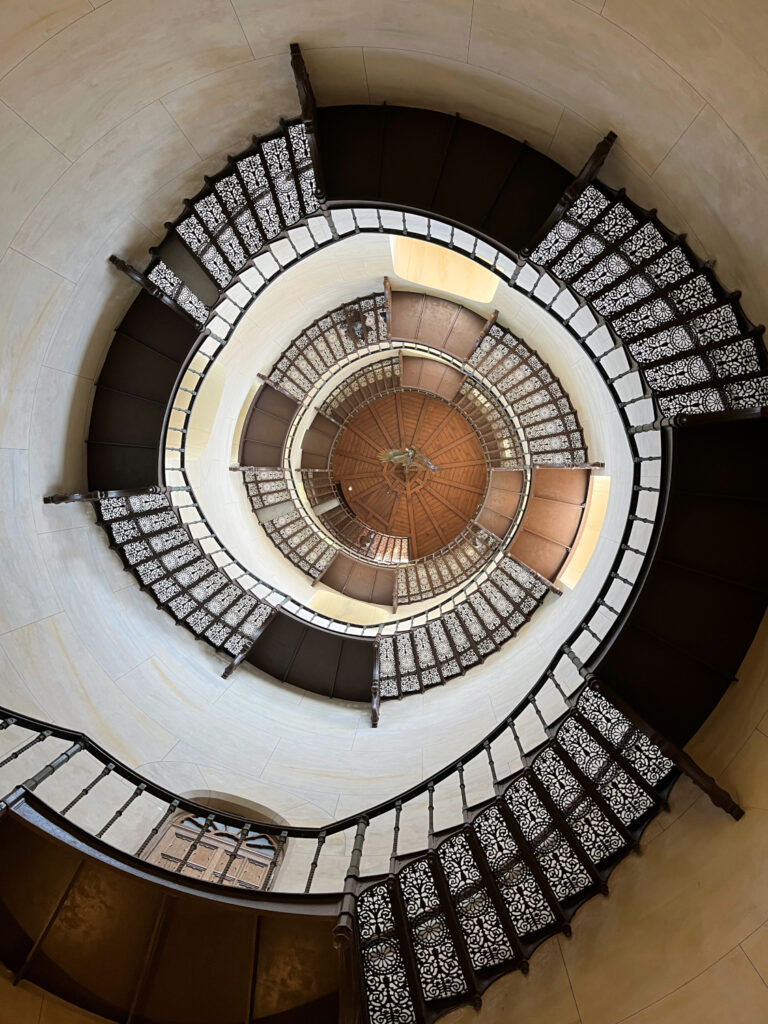
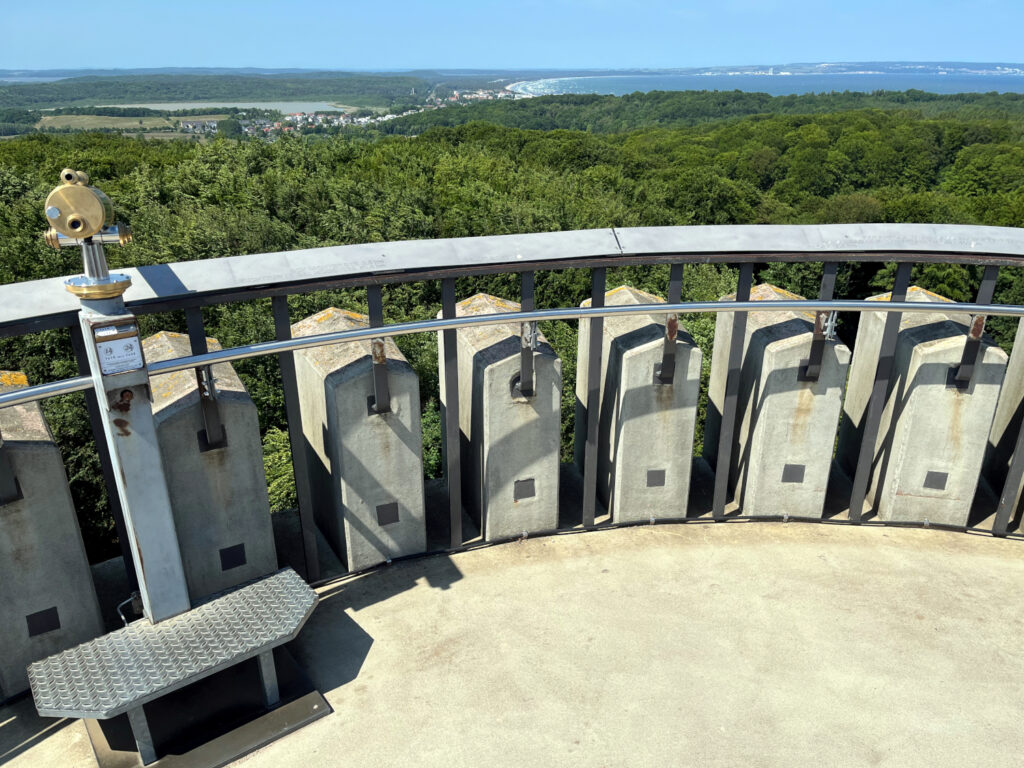
The castle is not only beautiful to look at from the outside. Inside it is very well preserved and developed as a museum. For 6 euros per person, the castle can be visited. Besides some paintings, sculptures and the furnishings of the former owners, the middle tower can be climbed. Inside the tower, an iron staircase is fixed, which winds up to the top of the tower. Beautiful to look at, the ascent and descent, however, is not for those afraid of heights.
Rügen: Where time fades in waves
After all the impressions you can linger around the hunting lodge. In addition to a beer garden and a refreshment stand with snacks and drinks, there is also a restaurant on site. So the way back can be mastered strengthened. In the early afternoon we reached Binz again. The sun was shining and even the steady strong wind could not dissuade us from our plan to spend another sunny afternoon in style in a beach chair and to swim in the Baltic Sea – or at least to hold the tips of our feet in the fresh sea.
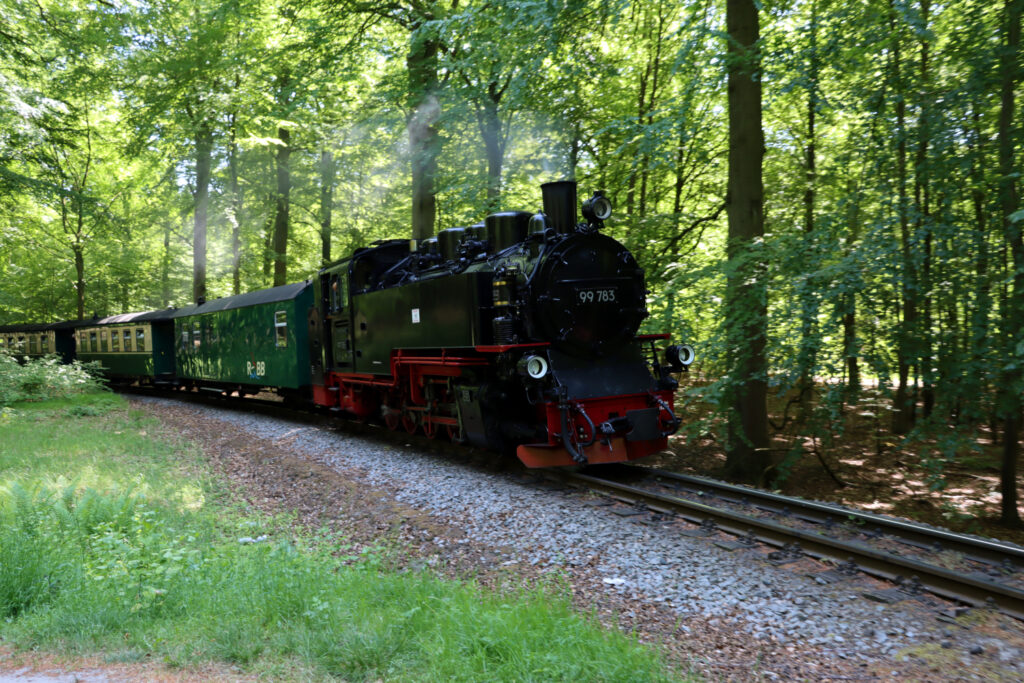
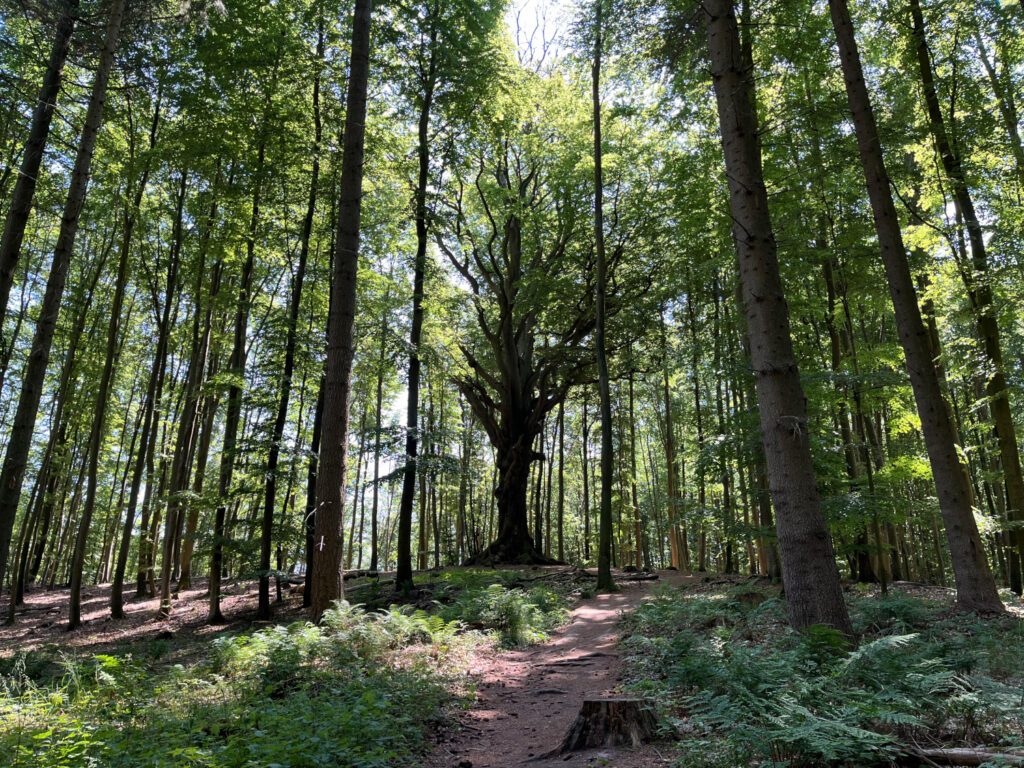
With the last warm rays of sunshine, we repacked our beach bag towards our last dinner on Rügen (Hotel Restaurant Villa Neander*). Afterwards, we decided to watch the beautiful sunset once again from the pier of the seaside resort of Binz. Since ice cream is a must at the end of a sunny beach day, we treated ourselves to a scoop of sea buckthorn ice cream at Eiscafé Rialto on the way home.
And so we happily and contentedly start our journey home. Hair tousled by the wind and sticky from the seawater, the tip of our noses burned by the sun, and with at least as many impressions and memories as sand between our toes.
If you want to learn more about sightseeing in Germany, read on here.
FAQs
– Putbus
– Ostseebad Binz
– Kap Arkona
– Königstuhl (Kreidefelsen)
– Ruinen von Prora
– Seebrücke Sellin
– Tauchgondel Sellin
– Jagdschloss Granitz
– Rasende Roland
– Märchenwaldbaum
The island of Rügen is easily accessible by car from Stralsund via the Rügen Bridge. The car can be used very well on the islands to get from A to B.
In Binz and Sellin you get great places with great beaches. Great nature in Cape Arkona in the north.
* The links to Check24, Booking.com and Getyourguide contained in this article are so-called affiliate links. With these links, tripination.com receives a commission for mediated purchases. The price does not increase for the customer.
